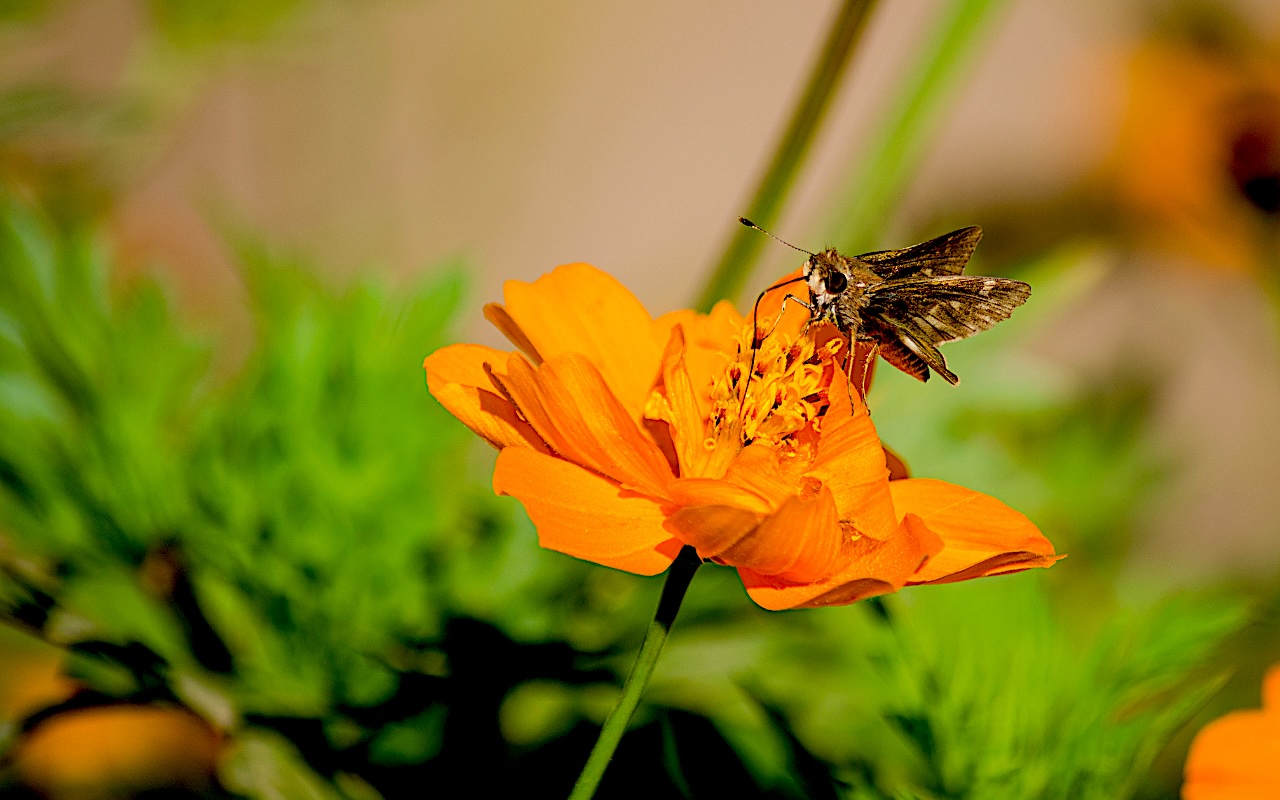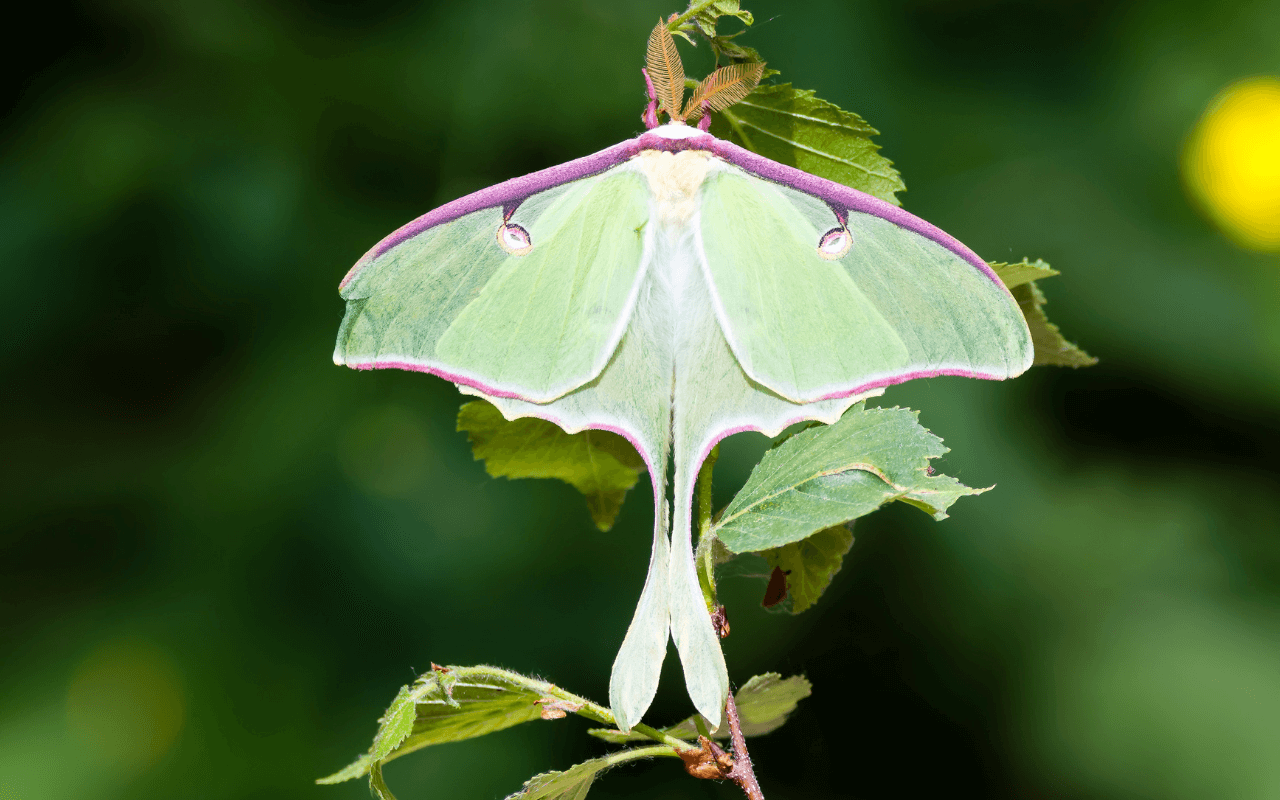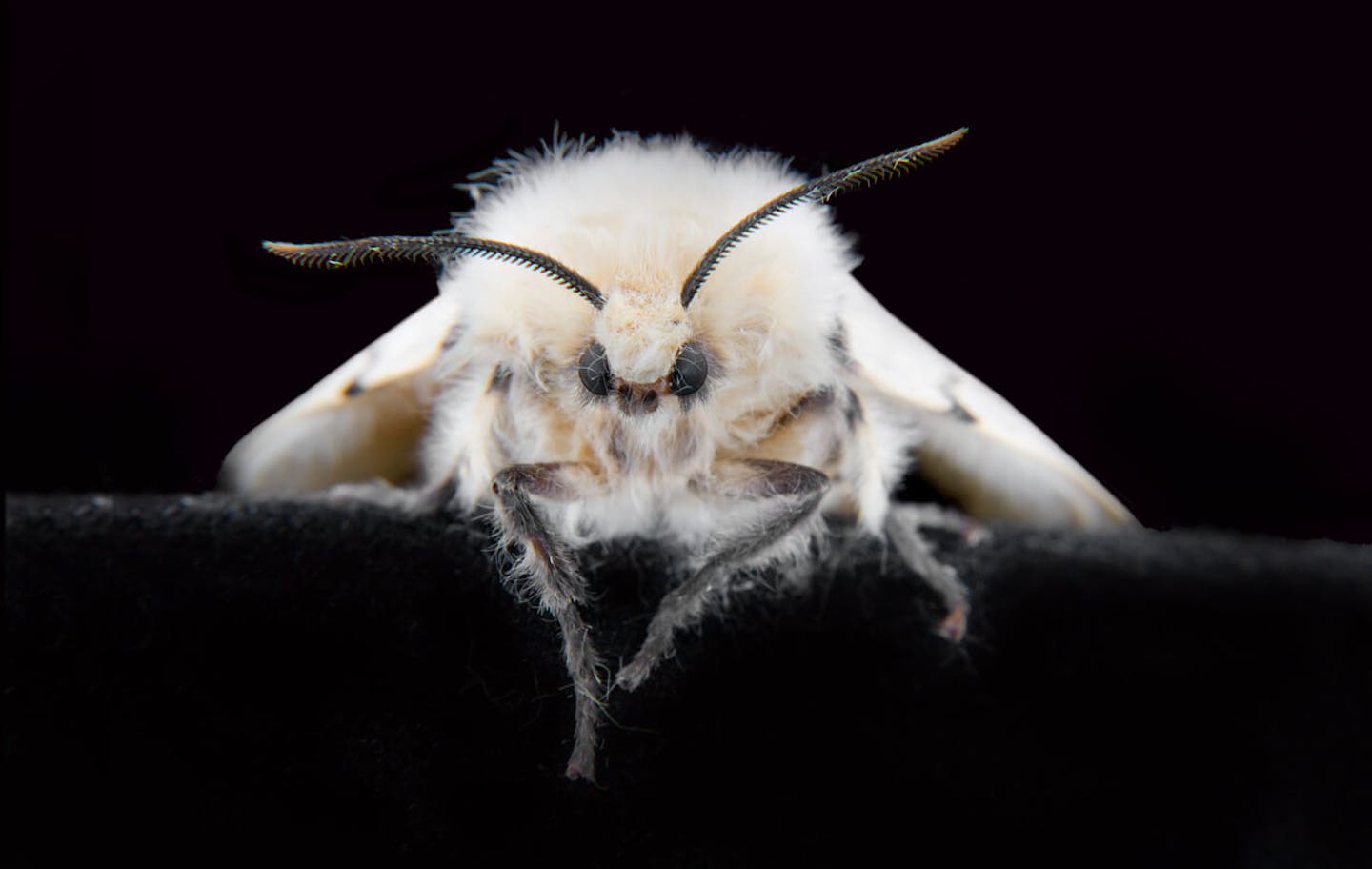How moths keep our world blooming, pollinating in the night
When it comes to pollinators, it’s usually the bees, butterflies, and hummingbirds that get all the buzz for their essential role in the health of the world’s agriculture and ecosystems. This recognition is because they are out working during the day, just like humans.
But at night, while most of the world sleeps, moths take the graveyard pollinating shift, and research shows may work harder than their daytime counterparts.
Two ways to transport pollen
Whereas moths are often only seen bobbing around porch or street lights at night, they actually spend most of their time visiting flowers. As butterflies drink nectar with their long tongues, so do moths, pollinating buds with each sip.
But a study published by Biology Letters found that more pollen is transported on the moth’s ventral thorax, their chest, rather than on their proboscis, their tongue. As moths sit on the flower while feeding, their furry bodies touch the plant’s reproductive organs, resulting in an abundance of rich pollen carried to the subsequent blooms they visit.

Moth on a flower collecting pollen. Image credit: Joab Souza, Creative Commons
Keeping our world blooming
This research also found that moths have an incredibly vast food web. During the day, bees and butterflies have a few overlapping species they pollinate, but also a variety that only they visit. But moths work overtime, interacting with many of the same plants as bees and butterflies.
Furthermore, moths visit the flowers that emit their most pungent fragrances at night, which many daytime pollinators miss, such as creeping buttercup and honeysuckle. Moths also aren’t afraid to work for their food, visiting flowers with deeply hidden nectar, such as morning glory, tobacco, yucca, and gardenia.
Overall, moths interact with 47 different plant species, more than either bees or butterflies. Complementing the work of daytime pollinators in various ways, moths help keep plant populations diverse and abundant. They also aid in filling in the gaps, acting as a natural biodiversity backup.

Luna Moth on leaves. Image credit: Courtesy of Tim Arthur
Pollinators in peril
This research is crucial as all pollinator species face a crisis, especially bees. Beekeepers across the US lost 45.5% of their managed honey bee colonies from 2020 to 2021 alone.
Pollinator populations are declining in many parts of the world primarily due to monocropping practices, excessive use of agricultural chemicals, and higher temperatures associated with climate change. While moths haven’t been hit as hard, research out of the UK shows their numbers are shrinking by 10% each decade.
.png)
Sphinx moth feeds on flower nectar at night. Image credit: Bogdan V, Creative Commons
Valuing the role of moths
Just as moths have been undervalued in their contribution to pollination, the importance of their conservation has also been underestimated. These nocturnal hard workers play an essential role in the ecological health of our planet as 75% of all flowering plant species need pollinators to aid them in fertilization.
Now is the time to spread awareness about moths and safeguard their habitats with the same vigor and urgency used to protect bees, butterflies, and hummingbirds. It is because of their efforts that the world keeps blooming while most are tucked in bed.
How urban gardens can help vital pollinators thrive


